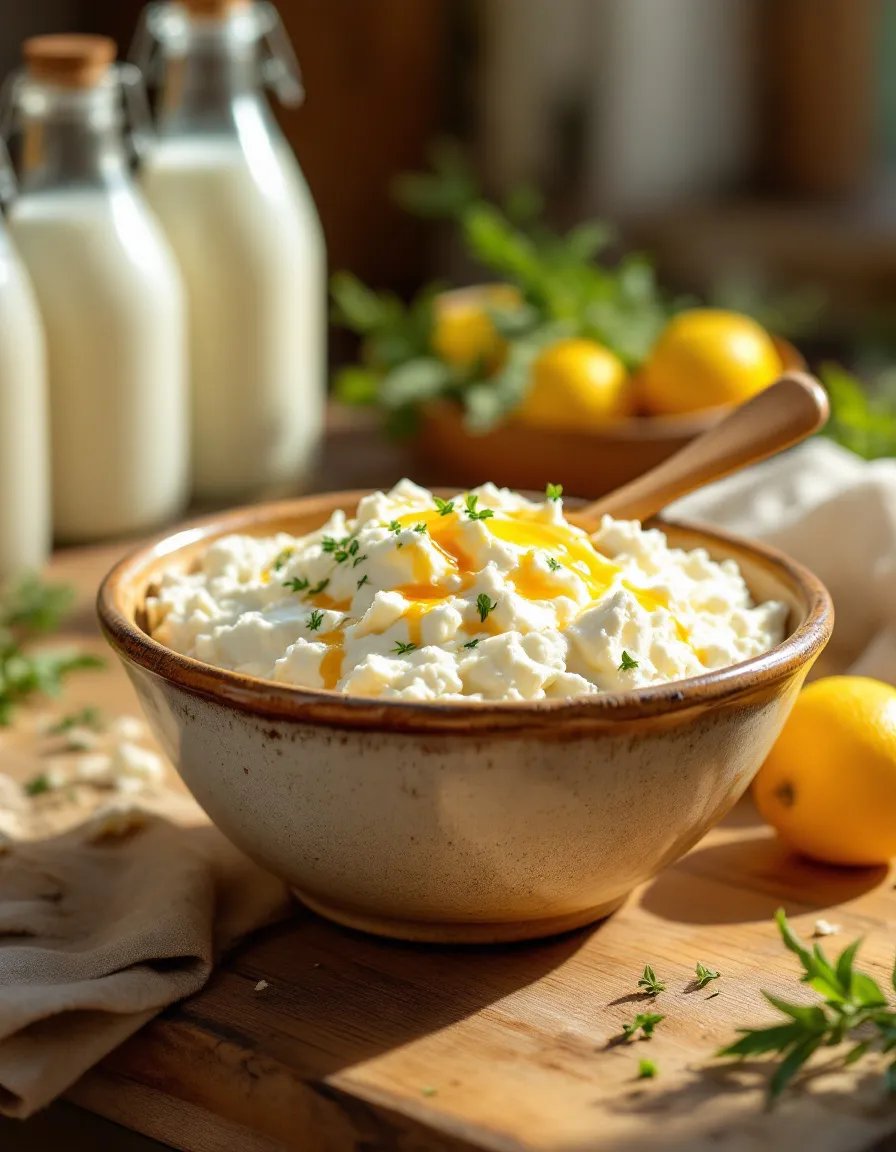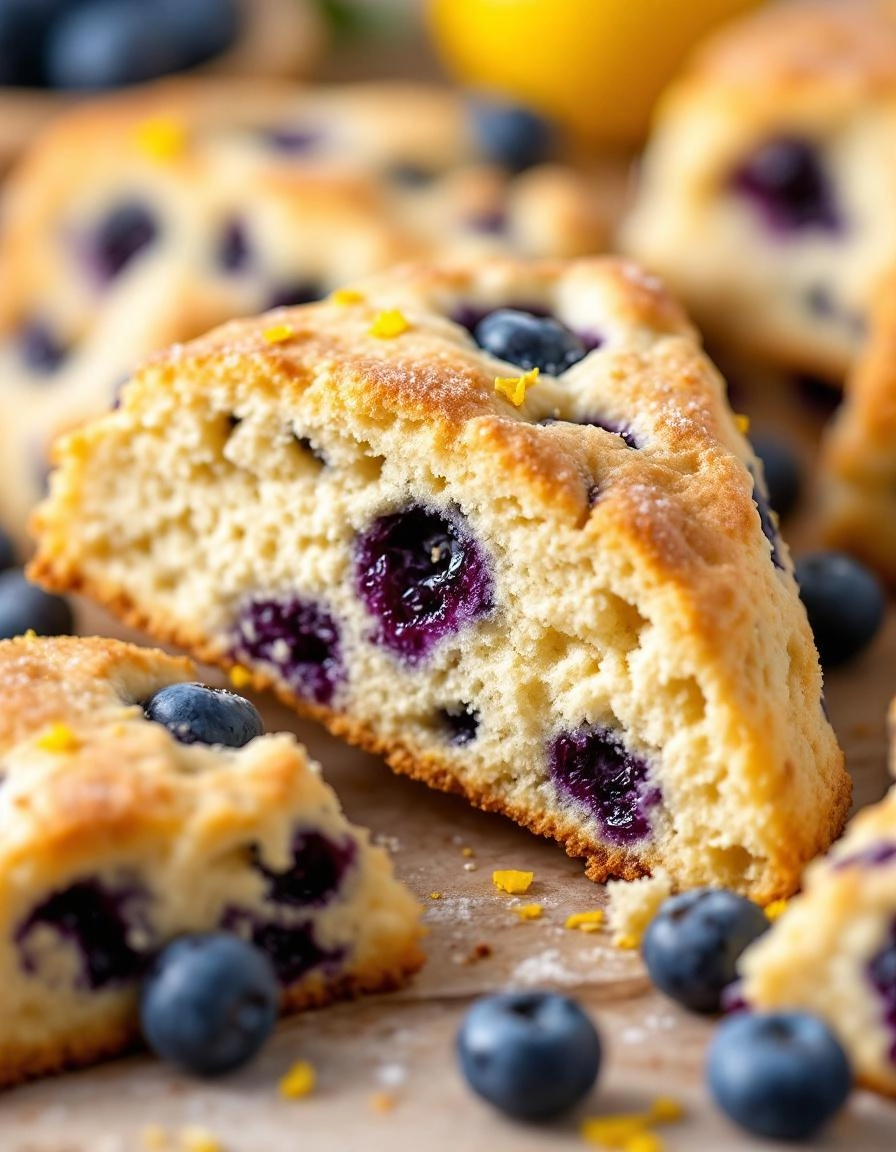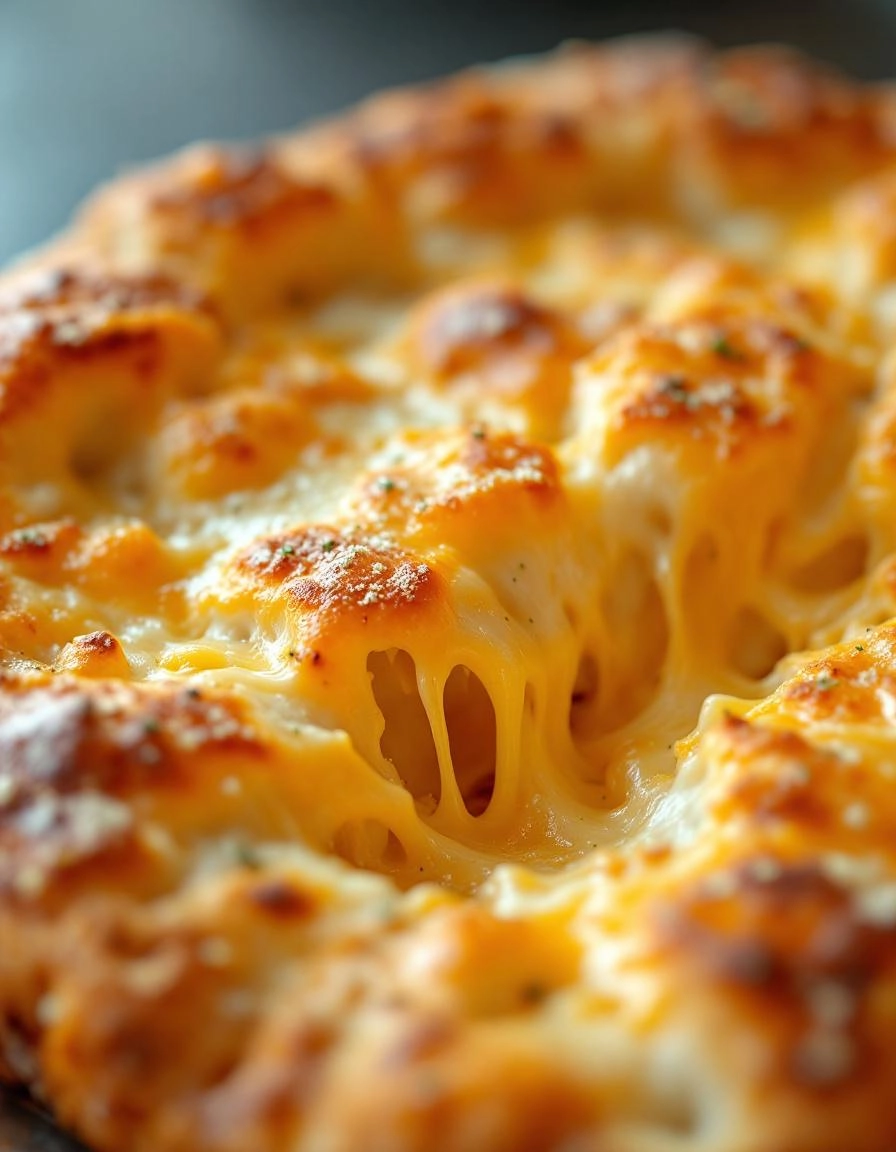Homemade Cheese: A Creamy, Delicious DIY Delight
There’s something incredibly satisfying about making your own homemade cheese. Whether you’re a cheese enthusiast or just looking for a fun kitchen project, this creamy, fresh cheese will elevate your meals with its rich, tangy flavor and smooth texture. Unlike store-bought varieties, homemade cheese allows you to control the ingredients, ensuring a pure, wholesome product free from additives.
This recipe yields a versatile cheese that can be used in salads, sandwiches, or simply enjoyed on its own with crackers. The process is surprisingly simple, requiring just a few basic ingredients and some patience. The result? A delicious, artisanal cheese that will impress your family and friends. Plus, making cheese at home is a great way to connect with traditional food preparation methods and appreciate the craftsmanship behind dairy products.
Quick Recipe Highlights
- Flavor Profile: Creamy, slightly tangy, with a delicate milky sweetness that pairs well with herbs and spices.
- Texture: Smooth and spreadable when fresh, firm enough to slice when aged slightly.
- Aroma: Fresh dairy notes with a clean, lactic fragrance that intensifies as it ages.
- Visual Appeal: Bright white with a soft, velvety surface that makes it perfect for garnishing.
- Skill Level Needed: Beginner-friendly with some attention to temperature control.
- Special Equipment: Cheesecloth, thermometer, and a large pot are essential for success.
Recipe Overview
- Difficulty Level: Moderate due to the need for precise temperature control, but the steps are straightforward and easy to follow.
- Category: Dairy, Appetizer, Snack, or Ingredient for Cooking.
- Cuisine: Universal, with roots in traditional European cheesemaking techniques.
- Cost: Budget-friendly, using simple ingredients like milk, lemon juice, and salt.
- Season: Perfect year-round, but especially satisfying in cooler months when fresh dairy flavors shine.
- Occasion: Great for entertaining, homemade gifts, or elevating everyday meals.
Why You’ll Love This Homemade Cheese
Making homemade cheese is a rewarding experience that allows you to enjoy fresh, preservative-free dairy at its best. The taste is incomparable—creamy, rich, and perfectly balanced with a subtle tang. Unlike mass-produced cheese, this version lets you customize the flavor with herbs, spices, or even a touch of honey for a sweet variation.
Beyond taste, homemade cheese is cost-effective. A gallon of milk yields a generous amount of cheese, making it a budget-friendly alternative to gourmet store-bought options. Plus, you can experiment with different milk types—whole milk for richness or goat milk for a tangier profile.
Nutritionally, homemade cheese retains more of milk’s natural enzymes and probiotics compared to processed versions. It’s a great source of calcium and protein, and since you control the ingredients, it’s free from unnecessary additives.
Socially, serving homemade cheese is a conversation starter. Whether it’s part of a charcuterie board or melted into a dish, guests will appreciate the effort and love that goes into crafting it from scratch.
Finally, this recipe is accessible. Even if you’ve never made cheese before, the steps are simple and the results are consistently delicious. Once you try it, you’ll never look at store-bought cheese the same way again.
Historical Background and Cultural Significance
Cheesemaking dates back thousands of years, with evidence of early production found in ancient Egypt and Mesopotamia. Originally, cheese was a way to preserve milk before refrigeration. Over time, different cultures developed unique techniques, leading to the vast variety of cheeses we enjoy today.
In Europe, monasteries played a key role in refining cheesemaking methods during the Middle Ages. Many famous cheeses, like Gouda and Brie, have roots in these traditions. Homemade cheese, like the one in this recipe, reflects these age-old practices but simplifies them for modern kitchens.
Regional variations of fresh cheese exist worldwide—from Indian paneer to Mexican queso fresco. Each culture has its own take, often influenced by local ingredients and culinary needs. This recipe is a versatile base that can be adapted to mimic many of these styles.
Today, the art of homemade cheesemaking is enjoying a revival as people seek authentic, slow-food experiences. Crafting cheese at home connects us to this rich history while allowing for creative expression in the kitchen.
Ingredient Deep Dive
Milk: The foundation of any cheese, milk’s quality directly affects the final product. Whole milk yields the creamiest results, but you can experiment with 2% or even raw milk for different textures. Always use the freshest milk possible for the best flavor.
Lemon Juice or Vinegar: These acids help coagulate the milk, separating the curds from the whey. Lemon juice adds a subtle brightness, while vinegar is more neutral. For a different flavor profile, you can also use citric acid or rennet.
Salt: Essential for flavor and preservation. Fine sea salt works best, but you can also use flaky salt for finishing. Avoid iodized salt, as it can impart a metallic taste.
Common Mistakes to Avoid
- Overheating the Milk: Too much heat can make the cheese rubbery. Use a thermometer to stay within the recommended temperature range.
- Not Draining Enough: Inadequate draining results in a watery cheese. Let it hang in cheesecloth until the desired consistency is reached.
- Using Ultra-Pasteurized Milk: This milk won’t curdle properly. Always check the label for pasteurization level.
- Skipping the Salt: Salt enhances flavor and texture. Don’t omit it, even if you’re watching sodium intake.
- Rushing the Process: Good cheese takes time. Be patient during curdling and draining for the best results.
Essential Techniques
Temperature Control: Heating the milk slowly and evenly ensures proper curd formation. A digital thermometer is invaluable here.
Curd Handling: Gentle stirring prevents breaking the curds into too-small pieces, which can lead to a grainy texture.
Draining: The longer you drain, the firmer the cheese. For a spreadable consistency, drain for less time; for a sliceable cheese, drain longer.
Pro Tips for Perfect Homemade Cheese
- Use a heavy-bottomed pot to prevent scorching.
- Add herbs or spices during the draining stage for infused flavors.
- Save the whey—it’s great for baking or fermenting vegetables.
- For a richer cheese, use cream along with milk.
- Experiment with aging: a day or two in the fridge intensifies the flavor.
Variations and Adaptations
Herbed Cheese: Mix in fresh basil, thyme, or rosemary for an aromatic twist.
Spiced Cheese: Add crushed red pepper, black pepper, or smoked paprika for heat.
Sweet Cheese: Blend in honey or maple syrup for a dessert-like spread.
Vegan Option: Substitute nut milk and use agar-agar for coagulation.
Serving and Presentation Guide
Serve your homemade cheese on a wooden board with crackers, fresh fruit, and nuts for a rustic presentation. Drizzle with olive oil and a sprinkle of flaky salt for extra elegance. For parties, shape the cheese into small rounds and roll them in herbs or edible flowers.
Wine and Beverage Pairing
A crisp white wine like Sauvignon Blanc complements the cheese’s tanginess. For non-alcoholic options, try sparkling water with lemon or a light herbal tea.
Storage and Shelf Life
Store in an airtight container in the fridge for up to a week. For longer storage, freeze in portions, though the texture may soften slightly upon thawing.
Frequently Asked Questions
Can I use plant-based milk? Yes, but the results vary. Coconut milk works best for a vegan version.
Why didn’t my cheese form curds? The milk may have been ultra-pasteurized or the acid wasn’t sufficient.
Can I age this cheese? This is a fresh cheese best eaten within days, but you can experiment with light aging.
The Recipe
Homemade Cheese
Serves: 8
Prep Time: 15 mins
Cook Time: 45 mins
Total Time: 60 mins
Kitchen Equipment Needed
- Large heavy-bottomed pot
- Thermometer
- Cheesecloth
- Colander
- Slotted spoon
Ingredients
- 1 gallon whole milk (not ultra-pasteurized)
- 1/4 cup lemon juice or white vinegar
- 1 tsp salt
Directions
- Heat milk in a pot over medium heat to 185°F, stirring occasionally.
- Remove from heat and gently stir in lemon juice. Let sit for 10 minutes until curds form.
- Line a colander with cheesecloth and pour the mixture through to separate curds from whey.
- Gather the cheesecloth edges and hang to drain for 1-2 hours for soft cheese, or longer for firmer cheese.
- Transfer cheese to a bowl, mix in salt, and shape as desired.
Recipe Notes
- For a richer cheese, replace 1 cup of milk with heavy cream.
- Add herbs or spices after draining for extra flavor.






